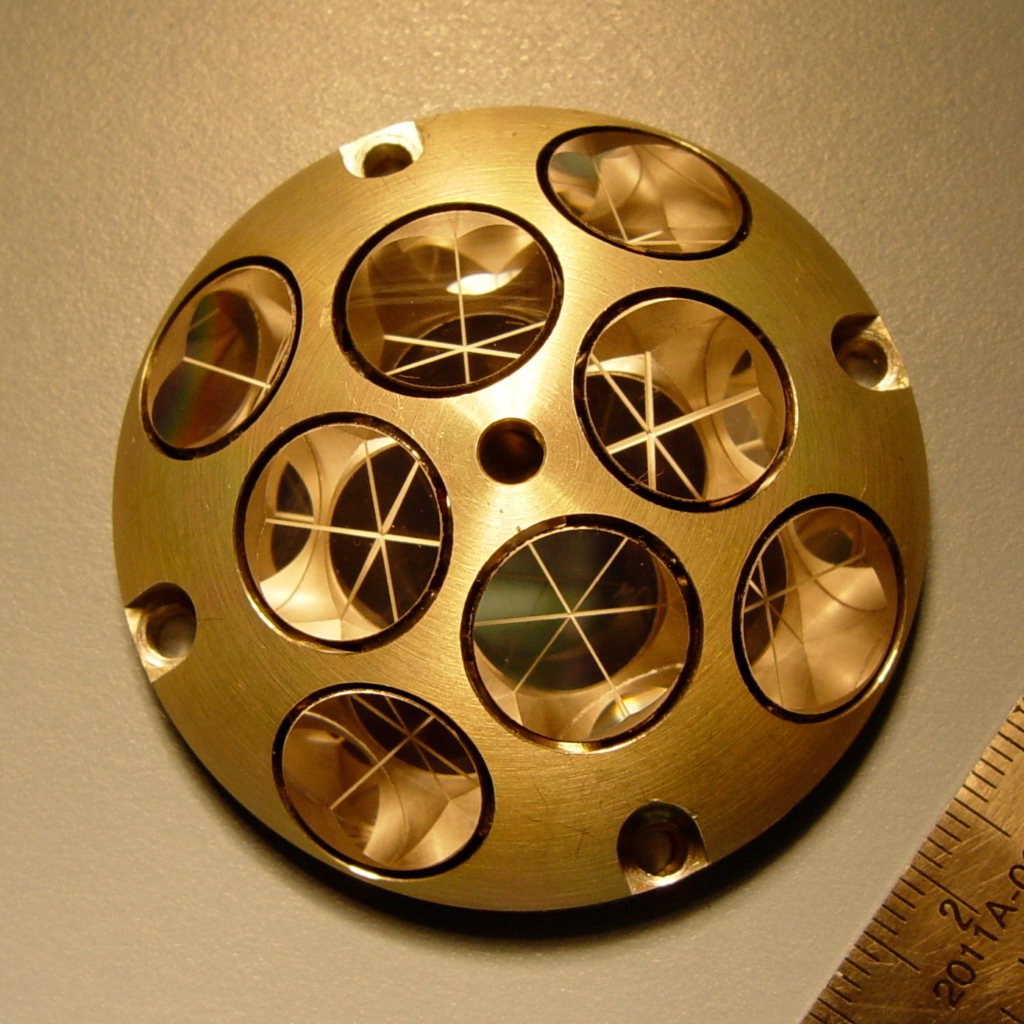NASA is utilizing a basic however viable innovation called Laser Retroreflective Exhibits (LRAs) to precisely decide the areas of lunar landers more. They will be joined to a large portion of the landers from US organizations as a feature of NASA's Business Lunar Payload Administration (CLPS) drive. LRAs are cheap, little, and lightweight, permitting future lunar orbiters or landers to find them on the Moon.
NASA is utilizing a straightforward however viable innovation called Laser Retroreflective Exhibits (LRAs) to precisely decide the areas of lunar landers more. They will be connected to landers shipped off the Moon as a component of NASA's Business Lunar Payload Administration (CLPS) drive. LRAs are modest, little, and lightweight.
Credit: NASA's Goddard Space Flight Center/Logical Perception Studio James Tralie (ADNET Frameworks, Inc.). Lead Maker Xiaoli Sun (NASA/GSFC): Researcher
This video can be unreservedly shared and downloaded at https://svs.gsfc.nasa.gov/14517.
These gadgets comprise of a little aluminum side of the equator, 2 inches (5 centimeters) in breadth and 0.7 ounces (20 grams) in weight, inset with eight 0.5-inch-width (1.27-centimeter) corner solid shape retroreflectors made of combined silica glass. LRAs are focused on for consideration on a large portion of the impending CLPS conveyances made a beeline for the lunar surface.
Photograph of a Laser Retroreflector Exhibit (LRA).
This photo shows a mockup laser retroreflector exhibit (LRA) at NASA's Goddard Space Flight Center, Greenbelt, Maryland, exhibiting the essential plan: a metallic semi-hemispheric circle, with eight silica glass blocks implanted in its surface.
NASA/Goddard
LRAs are intended to mirror laser light gleamed on them from an enormous scope of points. Dr. Daniel Cremons of NASA's Goddard Space Flight Center in Greenbelt, Maryland, representative head examiner for the LRA project, portrays this as being like the intelligent strips highlighted on street signs to support evening time driving here on The planet. “Not at all like a mirror where it must be pointed precisely back at you, you can come in at a wide assortment of points and the light will head straightforwardly back to the source,” he said.
By sparkling a laser pillar from one shuttle toward the retroreflectors on another and estimating what amount of time it requires for the light to return to its source, researchers can decide the distance between them.
“We have been putting these on satellites and running to them from ground-based lasers for a really long time,” said Dr. Xiaoli Sun, likewise of NASA Goddard and head agent for the LRA project. “Then, quite a while back, somebody understood to put them on the landers. Then you can reach to those landers from circle and know where they are on a superficial level.”
Picture of the laser-running office at NASA Goddard Space Flight Center.
This photo shows the Laser Running Office at the Geophysical and Cosmic Observatory at NASA's Goddard Space Battle Center, Greenbelt, Maryland, sparkling going lasers at NASA's Lunar Surveillance Orbiter rocket.
NASA
It is essential to know the area of landers on the outer layer of another planetary body and these LRAs go about as markers that work with circling satellites to lay out a route help like the worldwide situating framework (GPS) we underestimate here on The planet.
Laser running is additionally utilized for docking space apparatus, similar to the freight shuttle that are utilized for the Global Space Station, called attention to Cremons. The LRAs light up when you focus light on them which assists with directing accuracy docking. They can likewise be identified by lidars on rocket from a long way away to decide their reach and move toward speed down to extremely close exactness evaluations, and liberated from the requirement for brightening from the Sun, which permits docking to occur at evening. He adds that the reflectors could permit shuttle to precisely go get their direction to an arrival cushion, even without the guide of outside light to direct the methodology. This implies that LRAs can ultimately be utilized to assist space apparatus with arriving in any case black as night puts near for all time shadowed districts close to the lunar South Pole, which are practical objective regions for ran missions on account of the assets that could exist there, for example, water ice.
Since LRAs are little and made of basic materials, they can fly on logical missions as a helpful however okay extra. “Without help from anyone else, it's totally detached,” said Cremons. “LRAs will endure the unforgiving lunar climate and keep on being usable on a superficial level for quite a long time. Furthermore, other than exploring and finding out where your landers are, you can likewise utilize laser going to tell where your orbiter is around the Moon.”
This intends that, as additional landers, meanderers, and orbiters are shipped off the Moon bearing at least one LRAs, our capacity to precisely check the area of each will just get to the next level. In that capacity, as we convey more LRAs to the lunar surface, this developing organization will permit researchers to measure the area of key landers and different focal points increasingly more precisely, considering greater, better science to be achieved.
NASA's Lunar Observation Orbiter (LRO) is presently the main NASA space apparatus circling the Moon with laser-going capacity. LRO has proactively prevailed with regards to running to the LRA on the Indian Space Exploration Association's Vikram lander on the lunar surface and will keep on going to LRAs on future landers.
Under Artemis, CLPS conveyances will perform science tests, test innovations, and exhibit abilities to assist NASA with investigating the Moon and get ready for human missions. With Artemis missions, NASA will land the primary lady and first non-white individual on the Moon, utilizing creative advances to investigate a greater amount of the lunar surface than any time in recent memory. The office will work together with business and global accomplices and lay out the main long haul presence on the Moon. Then, NASA will utilize what we realize nearby the Moon to take the following goliath jump: sending the primary space explorers to Mars.







